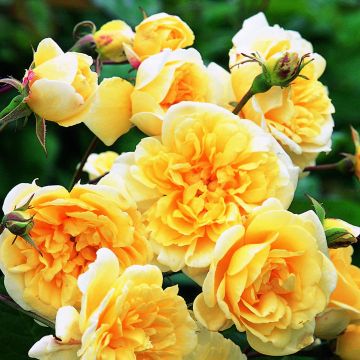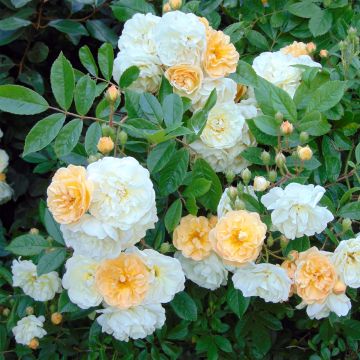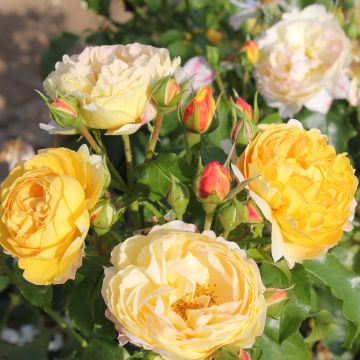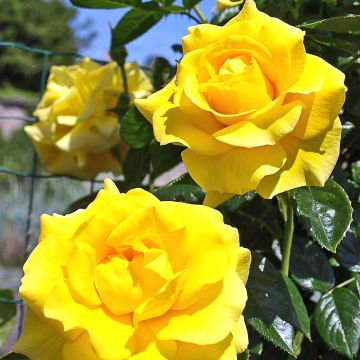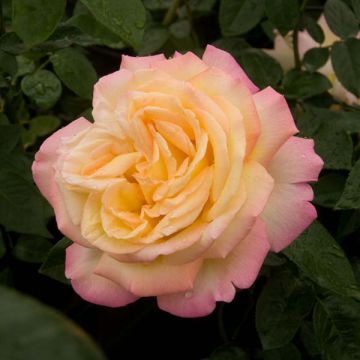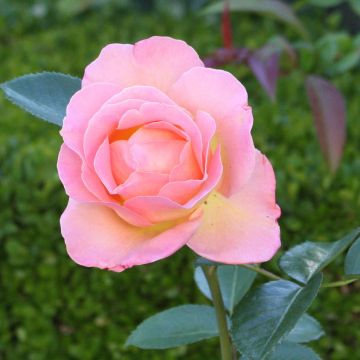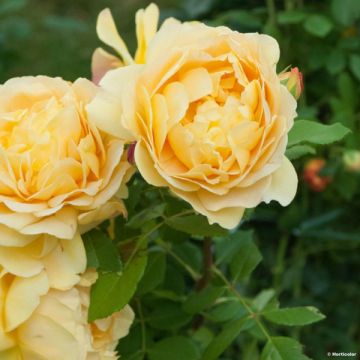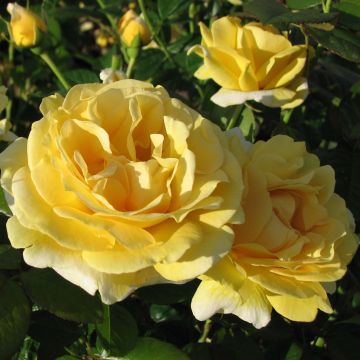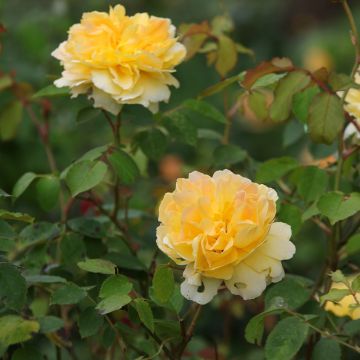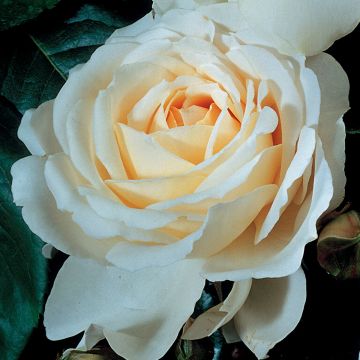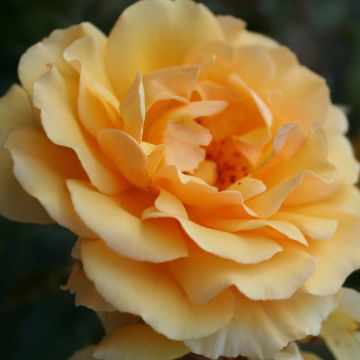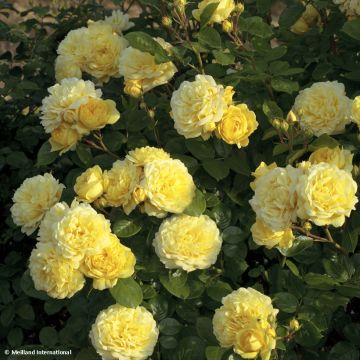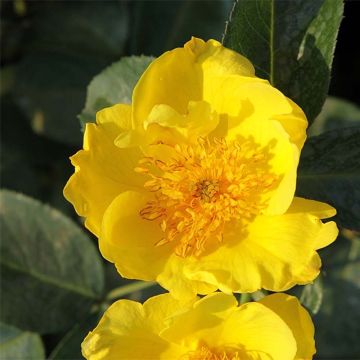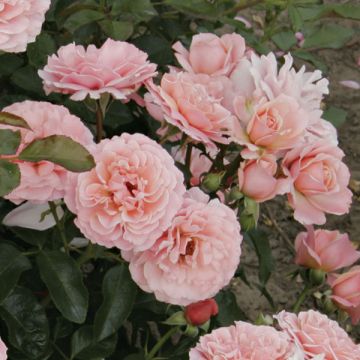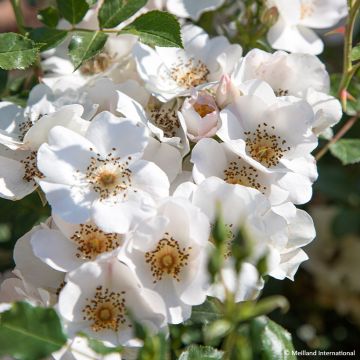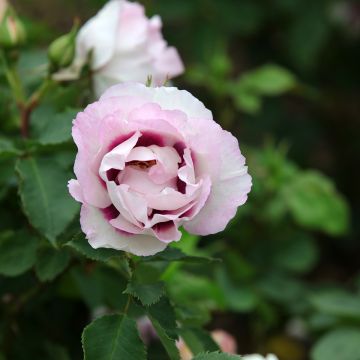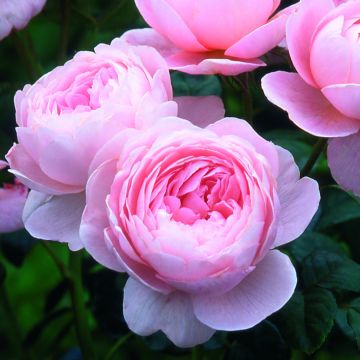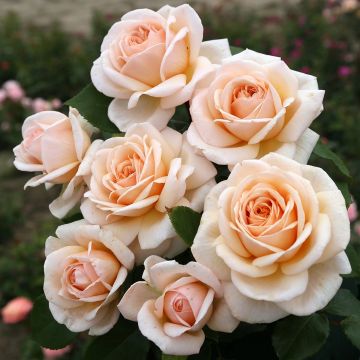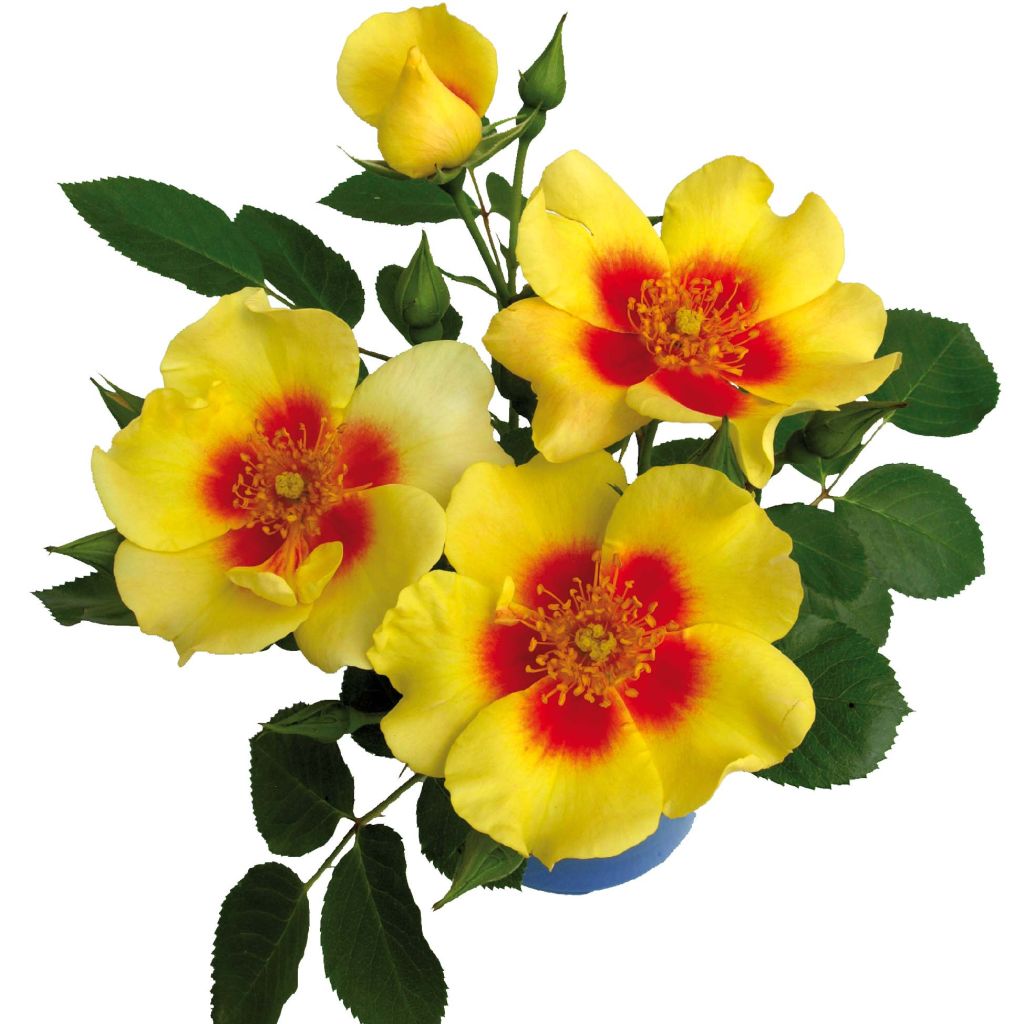

Rosa x persica Cyrus
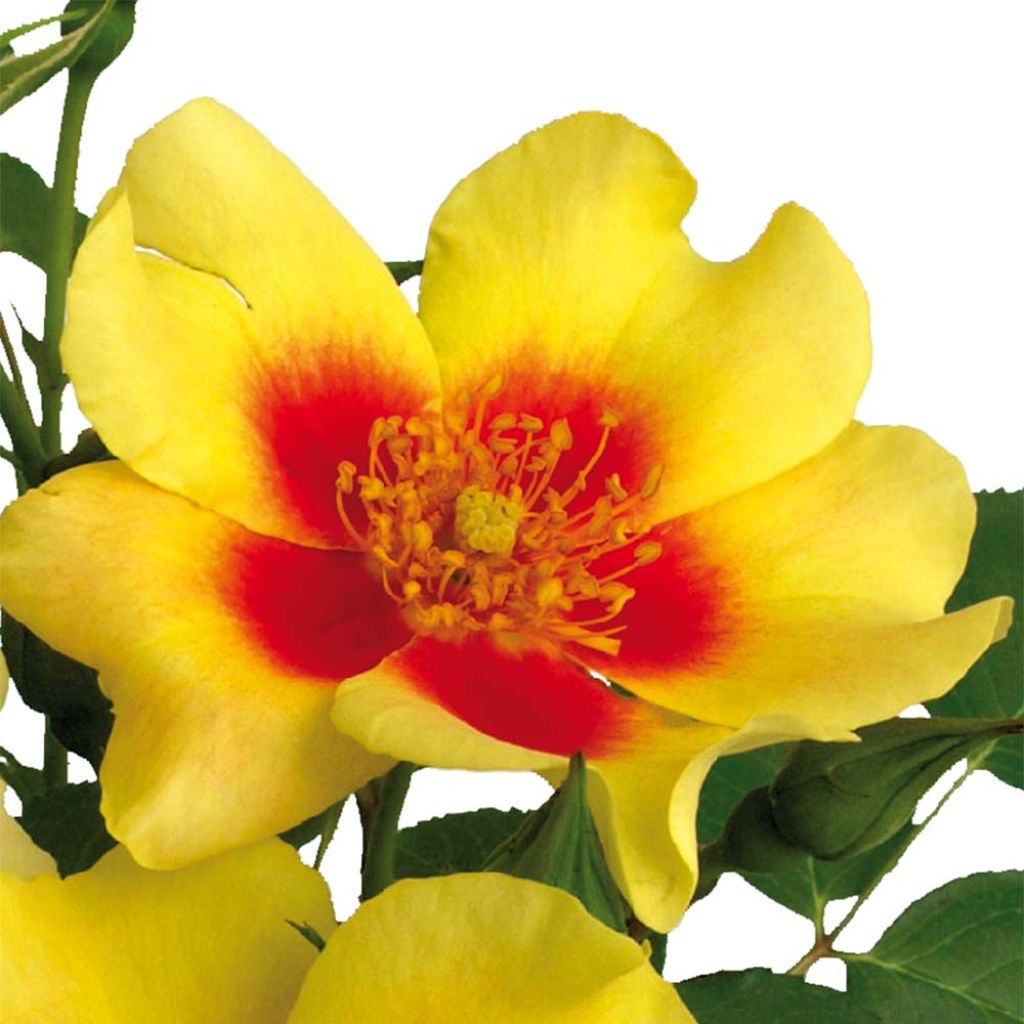

Rosa x persica Cyrus
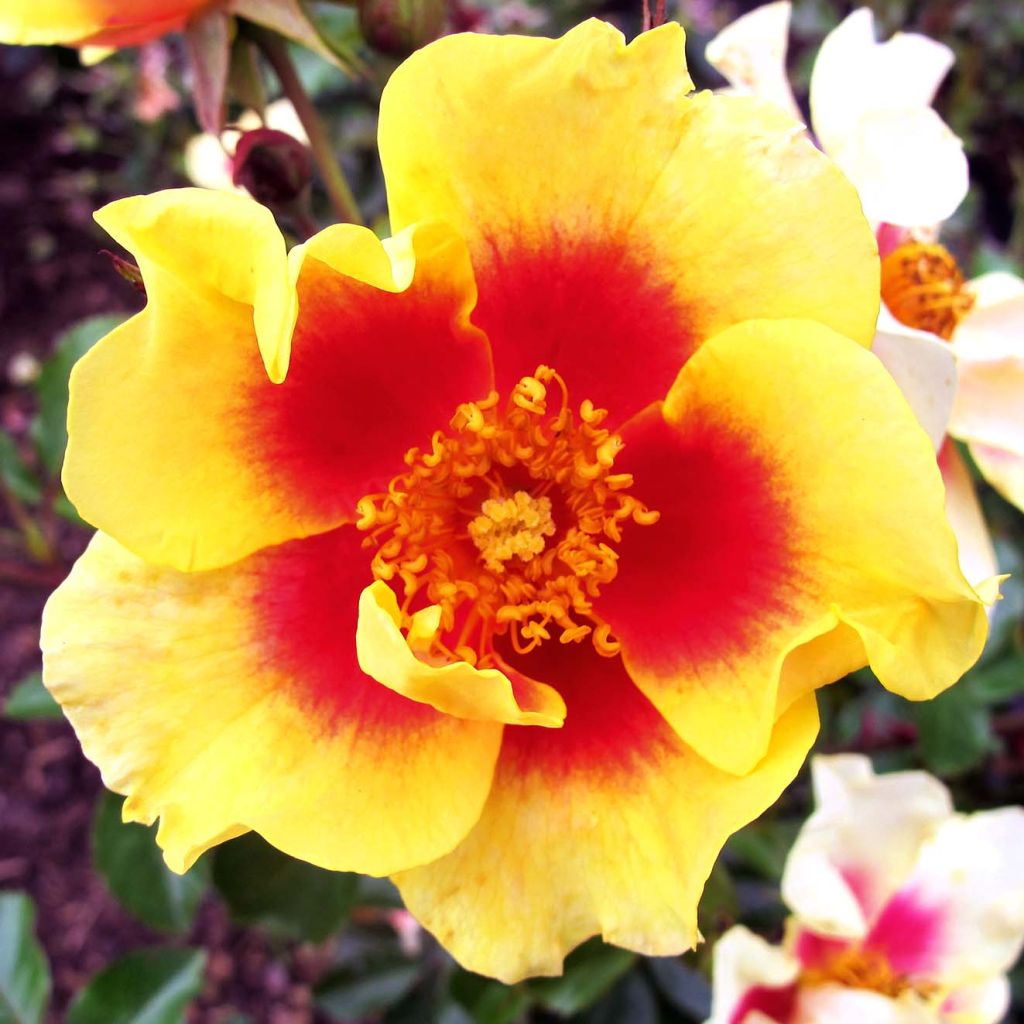

Rosa x persica Cyrus
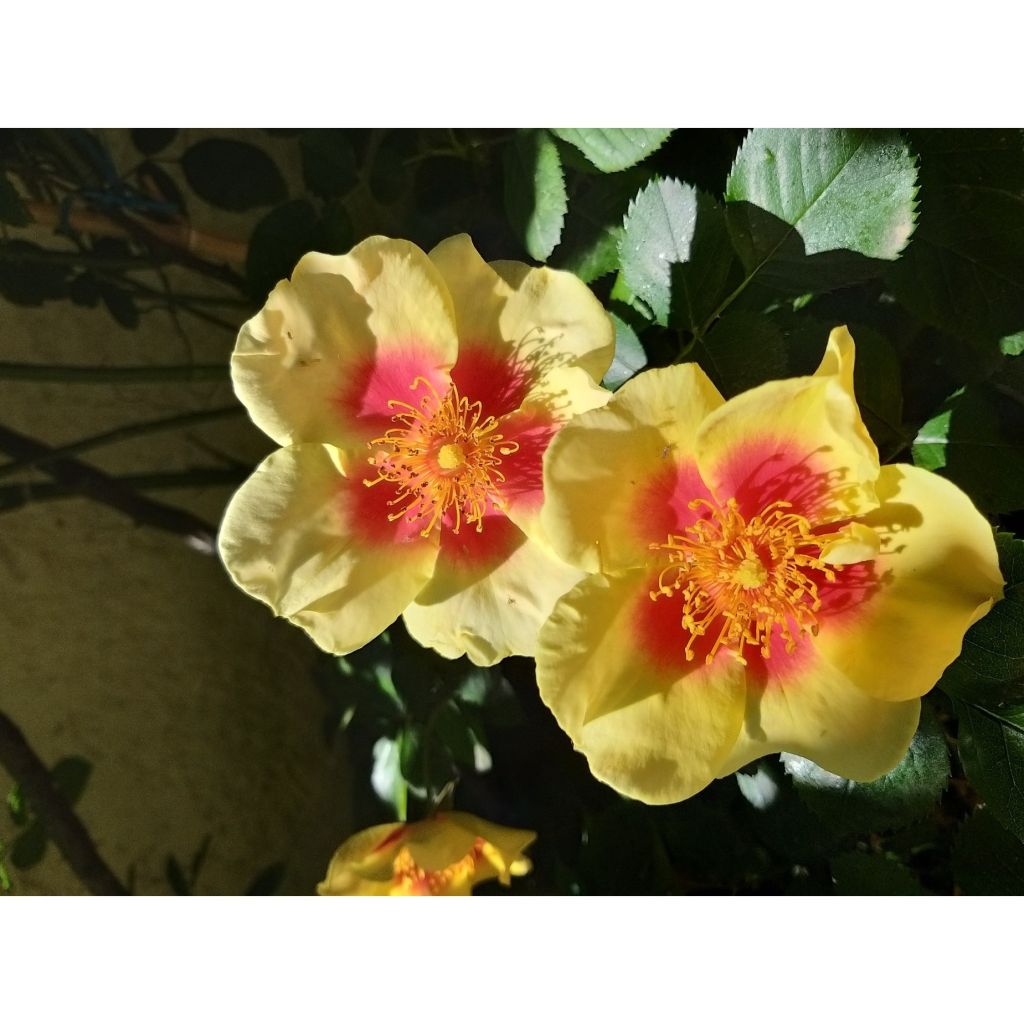

Rosa x persica Cyrus
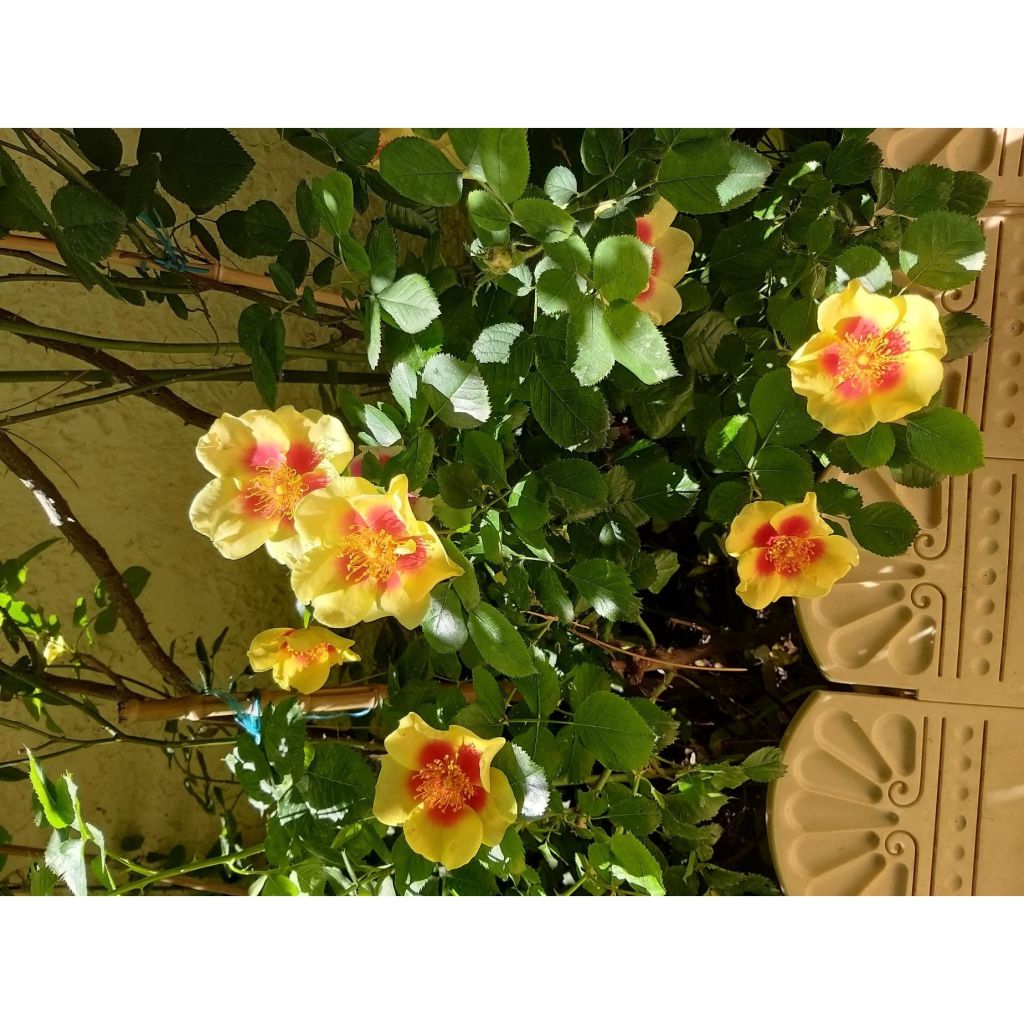

Rosa x persica Cyrus
Rosa x persica Cyrus
Rosa x persica Cyrus®
Persian Rose, Peach Blossom Rose
Why not try an alternative variety in stock?
View all →This plant carries a 24 months recovery warranty
More information
We guarantee the quality of our plants for a full growing cycle, and will replace at our expense any plant that fails to recover under normal climatic and planting conditions.
From €5.90 for pickup delivery and €6.90 for home delivery
Express home delivery from €8.90.
From €5.90 for pickup delivery and €6.90 for home delivery
Express home delivery from €8.90.
Delivery to Corse prohibited: UE law prohibits the import of this plant from mainland France to Corse as part of the fight against Xylella fastidiosa. Please accept our sincere apologies.
More information

Does this plant fit my garden?
Set up your Plantfit profile →
Description
The Cyrus Rose is a small shrub that exudes the joy of living. Not very tall but very floriferous, it produces clusters of single flowers from late spring until the first frost, speckled with red-orange in the centre, whose colour evolves from canary yellow to very pale yellow. This wonderful descendant of the Persian rose also offers good hardiness, it withstands summer drought and its dark green foliage is resistant to diseases. With its compact and bushy habit, it can be grown in a large pot or in the ground, bringing a touch of exoticism to even the most modest decor.
The Rosa x persica 'Cyrus' (Chewbullseye) descends from a wild rose named Rosa persica, discovered in 1784 by botanist André Michaux in the Zagros Mountains, straddling Iran and Iraq. The unique feature of its bicoloured flowers with a highly contrasting centre has since encouraged rose breeders to attempt hybridisation with other cosmopolitan species and varieties. After years of research and selection, new and very interesting cultivars have emerged, all over Europe.
'Cyrus', bred by Chris Warner in England and introduced in 2015, is one of these recent varieties with exotic charm, beautiful like hibiscus, still little known in our gardens. It is a shrub with an upright and bushy habit, rarely exceeding 80 cm (32in) in height and 70 cm (28in) in spread. Its branches are moderately thorny, and adorned with small but abundant foliage, a slightly shiny dark green, very healthy. The flowering occurs quite early, in June, and regularly renews until October. The single flowers with 5 petals, in flat cups, measure about 5 to 8 cm (2 to 3in) in diameter. The changing colours of the flowers make this wonderful bush a bouquet where different shades of yellow to cream or even white-pink, are highlighted by the central macules of a vibrant red-orange turning to dark pink at maturity.
'Cyrus', with its contagious good mood, is also a rose full of goodwill, which will seduce gardeners deprived of gardens or those who struggle with dry soil in summer, or frozen in winter. It will be adopted more than any other in a southern garden, on sandy or rocky soil, or on a slope, in a large rockery, wherever many other 'classic' roses would sulk. It is also hardy enough to withstand our normal winters, which allows it to be adopted almost everywhere. Hybrid Persian roses can be paired with many other plants such as garden irises, lavenders, rockroses, rosemarys, escallonias, oreganos, teucriums, sedums in dry soil. In cooler soil, it can be accompanied, for example, by yellow, pink or white foxgloves, white small star asters (Aster dumosus 'Schneekissen', Aster dumosus 'Kristina', Aster ericoides f. prostratus 'Snow Flurry') or the Brunnera macrophylla 'Alexander's Great', with its very silvery foliage. On the terrace or balcony, it can be surrounded, for example, by seaside cineraria, alstroemerias, white agapanthus or white sweet williams (Dianthus 'Mrs Sinkins').
Report an error about the product description
Rosa x persica Cyrus in pictures
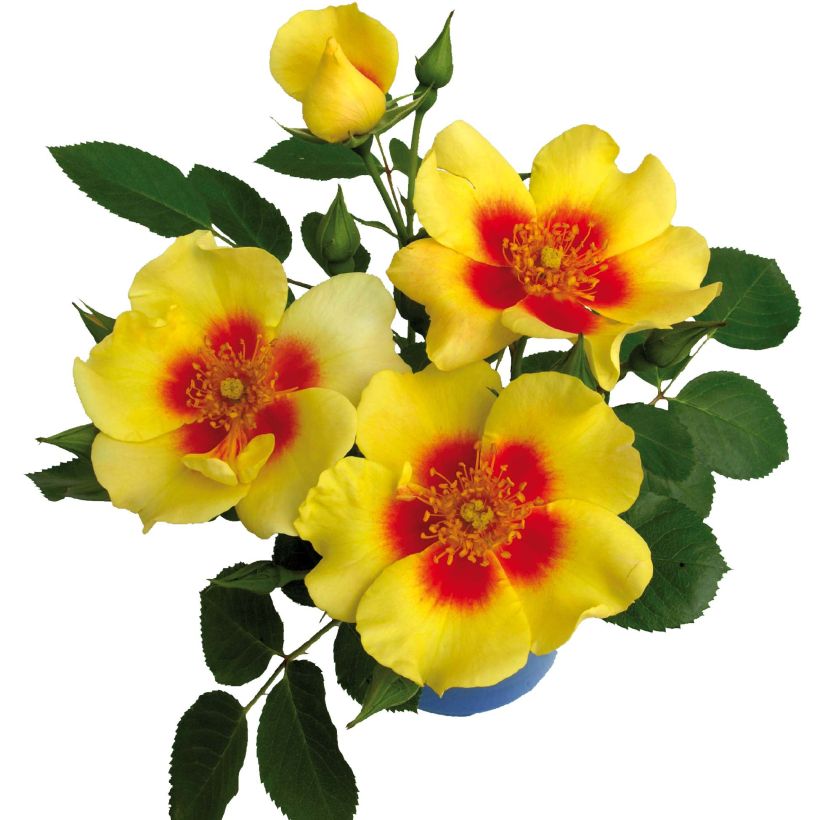

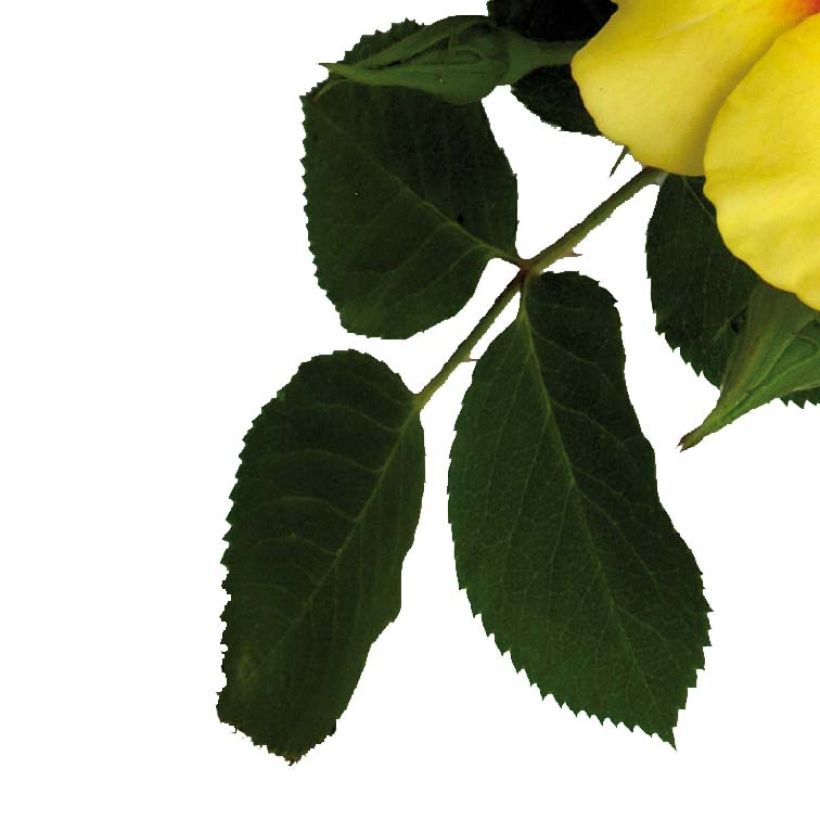

Plant habit
Flowering
Foliage
Botanical data
Rosa
x persica
Cyrus®
Rosaceae
Persian Rose, Peach Blossom Rose
Cultivar or hybrid
Rosa multiflora (Wrapped bare root, 4L/5L pot)
Other Roses A to Z
Planting and care
The Cyrus rose is not demanding on the nature of the soil, but it fears heavy and suffocating soils. It thrives in all sufficiently sunny regions, up to 1000 m (3281ft) altitude, is not afraid of diseases, cold, or drought once well established. It adapts to all gardens, as long as the planting is taken care of! Plant it in well-worked and properly drained ordinary soil and in a sunny location. Remove faded flowers to promote reblooming. At the end of winter, in February-March, prune moderately, even with shears. It can be useful to remove dead wood in winter.
Planting period
Intended location
Care
-
, onOrder confirmed
Reply from on Promesse de fleurs
Haven't found what you were looking for?
Hardiness is the lowest winter temperature a plant can endure without suffering serious damage or even dying. However, hardiness is affected by location (a sheltered area, such as a patio), protection (winter cover) and soil type (hardiness is improved by well-drained soil).

Photo Sharing Terms & Conditions
In order to encourage gardeners to interact and share their experiences, Promesse de fleurs offers various media enabling content to be uploaded onto its Site - in particular via the ‘Photo sharing’ module.
The User agrees to refrain from:
- Posting any content that is illegal, prejudicial, insulting, racist, inciteful to hatred, revisionist, contrary to public decency, that infringes on privacy or on the privacy rights of third parties, in particular the publicity rights of persons and goods, intellectual property rights, or the right to privacy.
- Submitting content on behalf of a third party;
- Impersonate the identity of a third party and/or publish any personal information about a third party;
In general, the User undertakes to refrain from any unethical behaviour.
All Content (in particular text, comments, files, images, photos, videos, creative works, etc.), which may be subject to property or intellectual property rights, image or other private rights, shall remain the property of the User, subject to the limited rights granted by the terms of the licence granted by Promesse de fleurs as stated below. Users are at liberty to publish or not to publish such Content on the Site, notably via the ‘Photo Sharing’ facility, and accept that this Content shall be made public and freely accessible, notably on the Internet.
Users further acknowledge, undertake to have ,and guarantee that they hold all necessary rights and permissions to publish such material on the Site, in particular with regard to the legislation in force pertaining to any privacy, property, intellectual property, image, or contractual rights, or rights of any other nature. By publishing such Content on the Site, Users acknowledge accepting full liability as publishers of the Content within the meaning of the law, and grant Promesse de fleurs, free of charge, an inclusive, worldwide licence for the said Content for the entire duration of its publication, including all reproduction, representation, up/downloading, displaying, performing, transmission, and storage rights.
Users also grant permission for their name to be linked to the Content and accept that this link may not always be made available.
By engaging in posting material, Users consent to their Content becoming automatically accessible on the Internet, in particular on other sites and/or blogs and/or web pages of the Promesse de fleurs site, including in particular social pages and the Promesse de fleurs catalogue.
Users may secure the removal of entrusted content free of charge by issuing a simple request via our contact form.
The flowering period indicated on our website applies to countries and regions located in USDA zone 8 (France, the United Kingdom, Ireland, the Netherlands, etc.)
It will vary according to where you live:
- In zones 9 to 10 (Italy, Spain, Greece, etc.), flowering will occur about 2 to 4 weeks earlier.
- In zones 6 to 7 (Germany, Poland, Slovenia, and lower mountainous regions), flowering will be delayed by 2 to 3 weeks.
- In zone 5 (Central Europe, Scandinavia), blooming will be delayed by 3 to 5 weeks.
In temperate climates, pruning of spring-flowering shrubs (forsythia, spireas, etc.) should be done just after flowering.
Pruning of summer-flowering shrubs (Indian Lilac, Perovskia, etc.) can be done in winter or spring.
In cold regions as well as with frost-sensitive plants, avoid pruning too early when severe frosts may still occur.
The planting period indicated on our website applies to countries and regions located in USDA zone 8 (France, United Kingdom, Ireland, Netherlands).
It will vary according to where you live:
- In Mediterranean zones (Marseille, Madrid, Milan, etc.), autumn and winter are the best planting periods.
- In continental zones (Strasbourg, Munich, Vienna, etc.), delay planting by 2 to 3 weeks in spring and bring it forward by 2 to 4 weeks in autumn.
- In mountainous regions (the Alps, Pyrenees, Carpathians, etc.), it is best to plant in late spring (May-June) or late summer (August-September).
The harvesting period indicated on our website applies to countries and regions in USDA zone 8 (France, England, Ireland, the Netherlands).
In colder areas (Scandinavia, Poland, Austria...) fruit and vegetable harvests are likely to be delayed by 3-4 weeks.
In warmer areas (Italy, Spain, Greece, etc.), harvesting will probably take place earlier, depending on weather conditions.
The sowing periods indicated on our website apply to countries and regions within USDA Zone 8 (France, UK, Ireland, Netherlands).
In colder areas (Scandinavia, Poland, Austria...), delay any outdoor sowing by 3-4 weeks, or sow under glass.
In warmer climes (Italy, Spain, Greece, etc.), bring outdoor sowing forward by a few weeks.

































